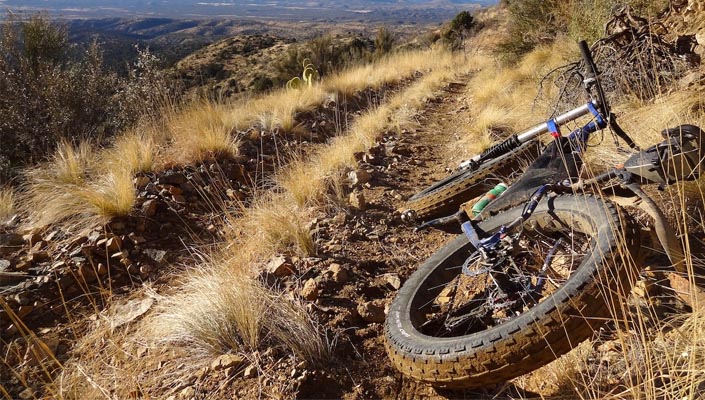Unlike road cycling, the variety of surfaces encountered when mountain biking requires you to evaluate and decide on the most appropriate tire. Not only are there varied surfaces you could be riding on, you also have to take into account how the weather will change these surfaces, and on top of that, there is your own riding style and how far you want to push your tires. It seems too much to consider, but we've summarized the key consideration for choosing your next set of tires.
Surface and terrain
Have a look at the terrain you're riding on most frequently. If you're riding on a very loose surface, or even a firm surface with a marbly top coating, then you'll be looking at a very different tread to one you'd ride in loamy forest trails. Try imagining your tread being deep enough to cut through the top loose layer, and into the firmer grippy underlayer of dirt. Once you've labeled the surface you're riding on, look at the terrain. If you're doing a lot of descending, a wider footprint will offer better grip and shock absorption at speed. If you're doing a lot of climbing, a narrower tyre with less rolling resistance will help you ease the strain. If you're doing both of these, find a midway point in tire choice!
Riding style
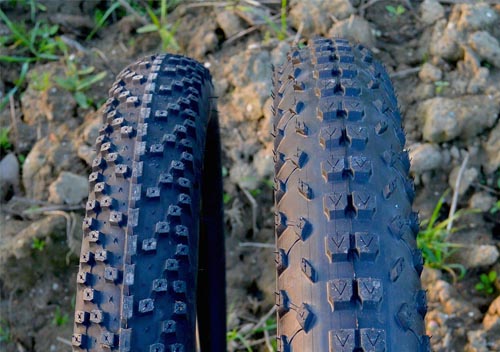
photo: isinglespeed.com
The hardest variable to account for is your riding style. A skilled rider can change their style to suit the terrain and tires underneath them, but a less advanced rider doesn't necessarily have this ability yet and will rely on the same riding style to get them through a huge variety of terrain. If you want to choose tires to suit your riding style, remember this: "A refined style uses refined tread. A burly style uses burly tread". So if you're a rider with finesse, you can use a tread more suited to cross country riding. If you go big and enjoy railing berms and popping off kicker jumps through the forest, then a burly tread with big block patterns is better suited to you.
Rubber compound
Once you've narrowed down your riding style and terrain, you can even go so far as to consider your preferred rubber compound. Some brands run the same compound through their entire range, which offers consistency. Other brands offer hard and soft compounds, just to refine their offerings that little bit more. A harder compound will cut through surfaces better, but will struggle to mould over the terrain, offering a rough ride and lessened grip when the tread 'floats' over the surface. They will last longer though!
A softer compound moulds over the surface better and works well on all surfaces. The only downside is that they do wear out more quickly, but the performance benefits can be worth it.

Tip:
A hard compound is good on soft surfaces. A soft compound is good on hard surfaces. It's easier than you thought!
Tire width
Tire width is called your footprint because it directly affects how much rubber is touching the ground at any time. A wider tire also has a wider spectrum of pressures. A narrower tire has less ground contact, which results in less rolling resistance (but potentially less grip). If you can't figure out what's best, think of a wider tire as good for floating over terrain. A narrow tire is good for cutting into the ground. If you're riding through sandy terrain, floating over the top is better, which means... wider tires! If the top coat is loose and marbly, you'll need narrower tires to cut through the loose stuff. Simple!
Tire pressure
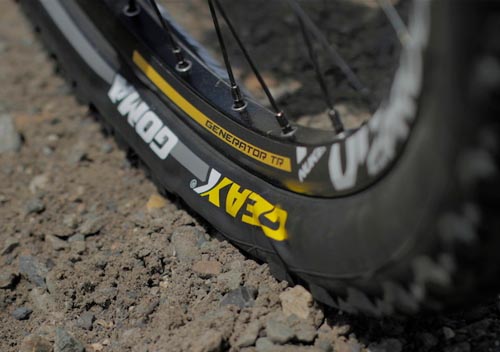
photo: pinkbike.com
Now that you've chosen your tires, you have to pump them up! We can't tell you the magic formula, but you need to consider the maximum and minimum pressures (shown on a tire's sidewall). From there, you need to consider your weight and riding style. If you're heavier, you need harder tires, if you're a lightweight, you need to drop the pressure for better grip. Style wise, if you ride hard then you might want to add a few PSI, depending on terrain. It's all a matter of playing around to find what suits you best.
Have fun learning what suits. Before long you'll be dishing out advice to your riding mates based on your first-hand experience. You'll find the front tire should be about 3-5 PSI softer than the rear, and that you can run a pressure as low as 25 PSI on normal tires, or even lower on tubeless. If you bottom out through to the rim, then you're running them too soft.

Tip:
Always write down your pressures. Keep a log of what you're using and adjust as necessary. Once you find the sweet spots, pump 'em up right every time.
If you find tires that do what you need, stick with them! A good tire for YOUR unique needs is hard to find, so good luck.
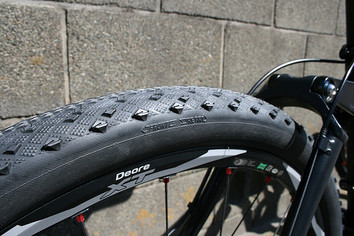
RELATED ARTICLE:
Get a Grip! Top 5 Mountain Bike Tires
Top 5 list of mountain bike tire types to enhance your ride. READ MORE
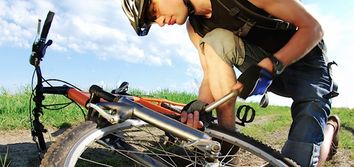
RELATED ARTICLE:
Understanding bicycle tire pressure
Whether road or mountain bike, understanding tire pressure is necessary if you want to get the most performance and pleasure out of your cycling... READ MORE
